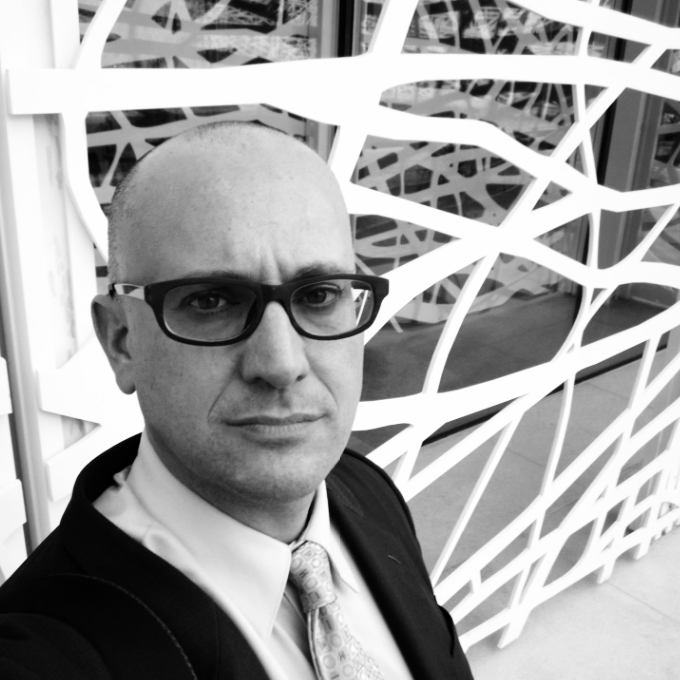
Perhaps fretting over climate change and rising ocean levels is a waste of time. After all, with over 70 percent of the Earth’s surface covered by water, there is plenty of room for floating communities to house the world’s population. It could eliminate the need for massive seawalls, skyrocketing insurance rates and a boost in hiring for the U.S. Army Corps of Engineers. Ideas for floating villages keep popping up, and why not? The automakers always tease us with concept cars, so why not have concept floating villages?
The latest idea is from famed yacht designer Christian Grande of Italy with his recently presented AbiFloat, which combines modular building and luxury. (Based on the size of his yachts, Grande already has designed a floating village.)
Combining the best ideas we've seen in the magazine Dwell and HGTV, Abifloat allows for “living in nature without borders,” and its homes’ designs would integrate into the local landscape, Grande said. The homes would be built out of lightweight and sustainable materials including aluminum, recycled plastic, straw and cork. Measuring 21 feet by 11 feet (6.5 by 3.25 meters), the structures could function as “modular reference points” and could be snapped together to make even bigger “superstructures.”
The photos are certainly fantastic, and the project is an enjoyable one to read about. So, is this the next wave of green building?
The idea of floating cities goes back to Homer’s "Odyssey" and has earned the words of countless writers, including Jules Verne and Isaac Asimov. Their appeal is certainly understandable: navigating the oceans, which are still really our final frontier; the ability to live beyond borders and bureaucracies; and testing out new technologies to accomplish everything from generating power to growing food.
And some groups are already pursuing the concept of a floating city. The Seasteading Institute claims such a project is only a few years away. Founded by a grandson of Milton Friedman, the organization backing the Floating City Project has completed a feasibility study, explored various designs and says it is working to find a nation to host the city. A 2013 crowdfunding campaign launched to fund research for a white paper had a modest goal of raising $US20,000 — and raised US$7,000 more than expected.
The Seasteading Institute builds on the idea behind The World, a 644-foot-long ship that boasts 165 condominiums, but is more for the exclusive and reclusive. Not to be outdone, the Freedom Ship promises a 4,500-foot-long, 350-foot-high floating palace complete, of course, with a shopping mall. But again, this is a complex that showcases features such as casinos, not composting or next-generation aquaculture. If the idea of floating communities is going to take root (or, actually, take afloat), they will have to appeal to the masses — otherwise we will just see a few more massive floating baubles.
While ideas such as those of Grande or Jacque Fresco make for interesting reads, they do not really talk about the difficult questions, as in how they will generate power, grow food and, most importantly, dispose of waste. Are these floating villages really just going to link up on shore every so often and hook up to a massive septic, as if they were gigantic RVs?
But like the American and Russian (and perhaps Chinese) space programs, the development of floating cities may not change the world, but the trend will definitely have its effect through the development of new technologies. New ideas to generate clean energy, dispose of waste, and grow food in an environment that's saline but nutrient-rich could result from these ideas that sound farfetched now, but could edge towards reality in a more crowded world.
Image credit: Christian Grande
Based in California, Leon Kaye is a business writer and strategic communications specialist. He has also been featured in The Guardian, Clean Technica, Sustainable Brands, Earth911, Inhabitat, Architect Magazine and Wired.com. When he has time, he shares his thoughts on his own site, GreenGoPost.com. Follow him on Twitter and Instagram.

Leon Kaye has written for 3p since 2010 and become executive editor in 2018. His previous work includes writing for the Guardian as well as other online and print publications. In addition, he's worked in sales executive roles within technology and financial research companies, as well as for a public relations firm, for which he consulted with one of the globe’s leading sustainability initiatives. Currently living in Central California, he’s traveled to 70-plus countries and has lived and worked in South Korea, the United Arab Emirates and Uruguay.
Leon’s an alum of Fresno State, the University of Maryland, Baltimore County and the University of Southern California's Marshall Business School. He enjoys traveling abroad as well as exploring California’s Central Coast and the Sierra Nevadas.














